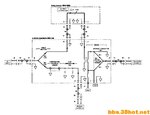heqinlong
Newbie level 2
I am very confused about the coupler in 8753E/ES。
I found the pics in this site:
http://www.union-rnd.com/8753e8753es%E5%86%85%E7%9A%84%E8%80%A6%E5%90%88%E5%99%A808753_60365%E6%8B%86%E8%A7%A3/
I also have the schematic diagram of 8753A/C's coupler:

they are so different.
What is the principle of 8753's test port coupler?
I found the pics in this site:
http://www.union-rnd.com/8753e8753es%E5%86%85%E7%9A%84%E8%80%A6%E5%90%88%E5%99%A808753_60365%E6%8B%86%E8%A7%A3/
I also have the schematic diagram of 8753A/C's coupler:

they are so different.
What is the principle of 8753's test port coupler?